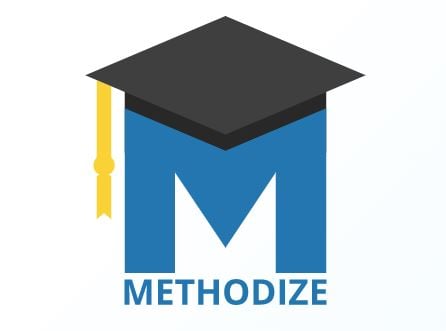What a Test Prep Expert Advises for the Class of 2022 (Updated Dec 2020)

Since the COVID-19 pandemic began, I have spoken to hundreds of parents, students, and counselors seeking advice about a standardized testing plan in this uncertain time. My current advice for the Class of 2022 (current 11th graders): I would prepare for the March SAT and April ACT.
Submitting an ACT or SAT score is still an admissions requirement at many schools, and even at test-optional schools, submitting strong ACT or SAT scores will still give applicants an advantage over those who do not submit their scores. In addition, many colleges require an ACT or SAT score in order to be eligible for certain scholarships or academic merit aid. In reality, only a small number of colleges and universities are truly "test-blind", meaning the school won't even look at an applicant's test scores.
My advice as far as which ACT and SAT exams to take in a student’s junior year has always revolved around the College Board’s Question and Answer Service and ACT’s Test Information Release Service. For 22 years, I have been saddened by parents’ and students’ lack of awareness about these services. In a nutshell, the family pays an additional $18 on the SAT ($20 on the ACT) when they register, and the College Board or ACT sends the student a full breakdown of their test results, including an answer sheet showing the student's answers and the correct answers, along with all of the questions from the exam. It is a highly efficient tool for improving your score on your next attempt. The way I like to describe it is "Imagine taking a four hour test, getting a score you are not completely satisfied with, not being told what you did wrong and then being told to take the exam again". That’s absurd! It makes more sense to review/learn from your mistakes before you take an exam for a second time.
The College Board offers the Question and Answer (QAS) Service on the March, May, and October SATs and ACT offers their Test Information Release (TIR) Service on the December, April, and June ACTs. Therefore, it makes sense right now to target the March SAT and the April ACT so families can order these services. Once a student has taken each test once, use the official ACT/SAT concordance tables to determine on which test the student scored higher and take that test a second time. Many students score about the same on the two exams, which is not surprising since there is so much overlap in the content of the two tests. In such cases, the student should take whichever test they felt more comfortable with.
On a side note, many families express concern that waiting until March of junior year to take the SAT for the first time seems too late, but this is usually not the case! In fact, students are likely to score higher in the spring of their junior year due to the additional math, vocabulary, and grammar they learn as junior year progresses.
Once a student has taken each test once and determined which test they scored higher on (or if they scored about the same, which test they felt more comfortable with,) they should take that test a second time (no need to take both tests twice). A logical second attempt for the ACT would be June (TIR is offered again) or May for the SAT (QAS is offered again.) The goal is for this to be the final time they need to take these exams. These are long, grueling exams that nobody wants to take more times than they need to, but of course, a student can always take the SAT or ACT an additional time if need be.
So how can a student score as highly as possible and therefore get accepted to more places and earn more in academic merit aid and scholarship money? The first thing every student should do is use the Method Test Prep checklist of 15 minute tasks. Students who follow this checklist increase their SAT scores an average of 150 points and their ACT scores an average of 3 points. The checklist consists of text and audio lessons during which a teacher walks students through every strategy and technique needed to score highly on these exams, questions for students to practice on, and video and text explanations so students can watch the fastest way to solve questions. Thousands of students use this checklist each week to score higher on these exams. A second option that parents and students should consider is our live, online classes. Many students take these classes in conjunction with the self-paced checklist because they like the blended approach of live review and independent practice.
In addition to the self-paced checklist and live instruction, it is critical that students take a few full-length, timed practice exams before their official exam. When a student takes a practice SAT or ACT, they need to approach it as they would the real exam. Many students don’t take the practice test 100% seriously, and therefore, their scores are not accurate reflections of how well they can score. To expand on this slightly, my advice to students has always been to treat these exams like a game, challenge, or brain teaser (pick your favorite.) The tests are trying to trick you, and you are trying not to fall for their tricks. Every time I practiced for these exams and I made a mistake, I asked myself “How was I tricked?” Once I figured out my mistake (or someone explained to me my mistake), I acknowledged that the test-makers beat me and vowed not to let them fool me on that same thing again. Keep in mind that often just one additional question answered correctly on the SAT increases a student’s score 10 points! Students and parents are often surprised to hear this, and having this knowledge increases a student’s confidence that they can significantly improve their score.
As far as the optimal way to study for the ACT and SAT, humans learn most effectively in smaller doses over a longer period with time in between for their brains to process the new information (rather than cramming for the ACT or SAT in the last two weeks before the exam.) Two to three hours per week is an appropriate amount of time for students in the Class of 2022 to spend preparing for these exams. In addition to leading to higher test scores, spending two to three hours per week preparing for the ACT and SAT can also lead to a more successful junior year; students frequently notice that something they learned preparing for the ACT or SAT helped them in math or English class.
If you have questions about this post (or anything having to do with the PSAT, ACT, or SAT) or would like to discuss the most appropriate plan for your son or daughter, email me at tom@methodlearning.com or fill out our contact form and we will get right back to you.


